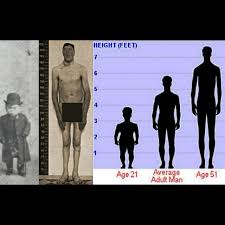Understanding Dwarfism: Causes and Social Impact

Introduction
Dwarfism, often defined as a condition resulting in short stature, is an important topic within society, affecting approximately 1 in every 1,500 to 2,500 births globally. As conversations around inclusion and diversity continue to evolve, understanding dwarfism becomes crucial in promoting awareness and acceptance. This article explores the causes of dwarfism, the challenges faced by individuals, and the significance of advocacy within our communities.
Understanding Dwarfism
Dwarfism is classified mainly into two categories: proportionate and disproportionate dwarfism. Proportionate dwarfism means that the individual’s body parts are in proportion, albeit smaller in scale, often due to a medical condition such as hormone deficiencies. Disproportionate dwarfism, the more common form, results when the body parts grow at different rates, usually due to genetic conditions like achondroplasia, which accounts for approximately 70% of all dwarfism cases.
Challenges Faced
Individuals with dwarfism often encounter numerous challenges, both physically and socially. Physically, they may face health complications such as spinal stenosis, ear infections, and obesity. Socially, they may experience discrimination, bullying, or stigmatization due to their appearance, which can adversely affect their mental health and self-esteem.
Advocacy and Support
The role of advocacy in supporting individuals with dwarfism has grown significantly over recent years. Organizations such as Little People UK and the Dwarf Sports Association UK work tirelessly to promote awareness and improve the lives of those affected. These groups provide educational resources, support networks, and initiatives to foster a more inclusive environment. Public awareness campaigns, like International Dwarfism Awareness Day, which takes place on October 25th, aim to highlight the challenges faced by those with dwarfism and celebrate their achievements.
Conclusion
As society continues to strive towards inclusivity, understanding dwarfism becomes increasingly critical. Through education and advocacy, we can dismantle stereotypes and create a more accepting world. It is essential to recognise that individuals with dwarfism contribute significantly to the fabric of our society, enriching our communities with their diverse perspectives and experiences. Moving forward, fostering a culture of understanding and acceptance will not only benefit those with dwarfism but will also enhance the overall quality of life for everyone.









